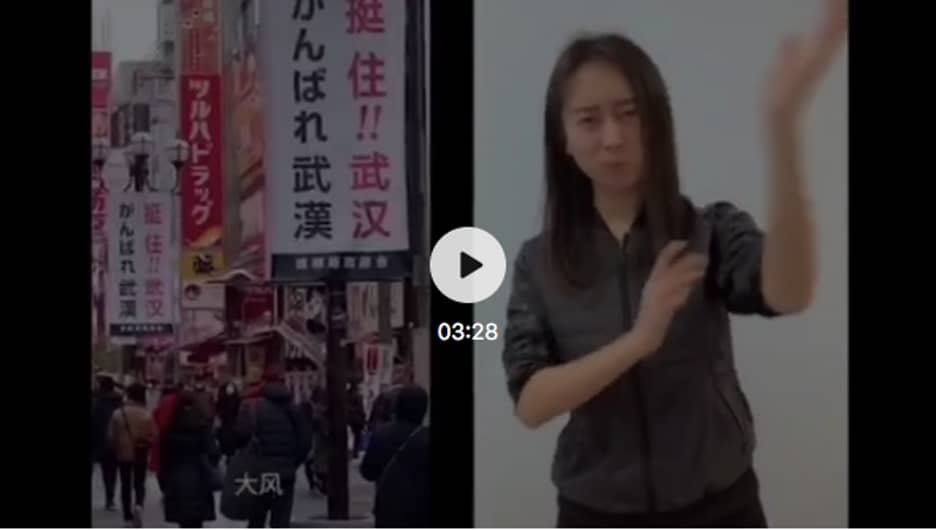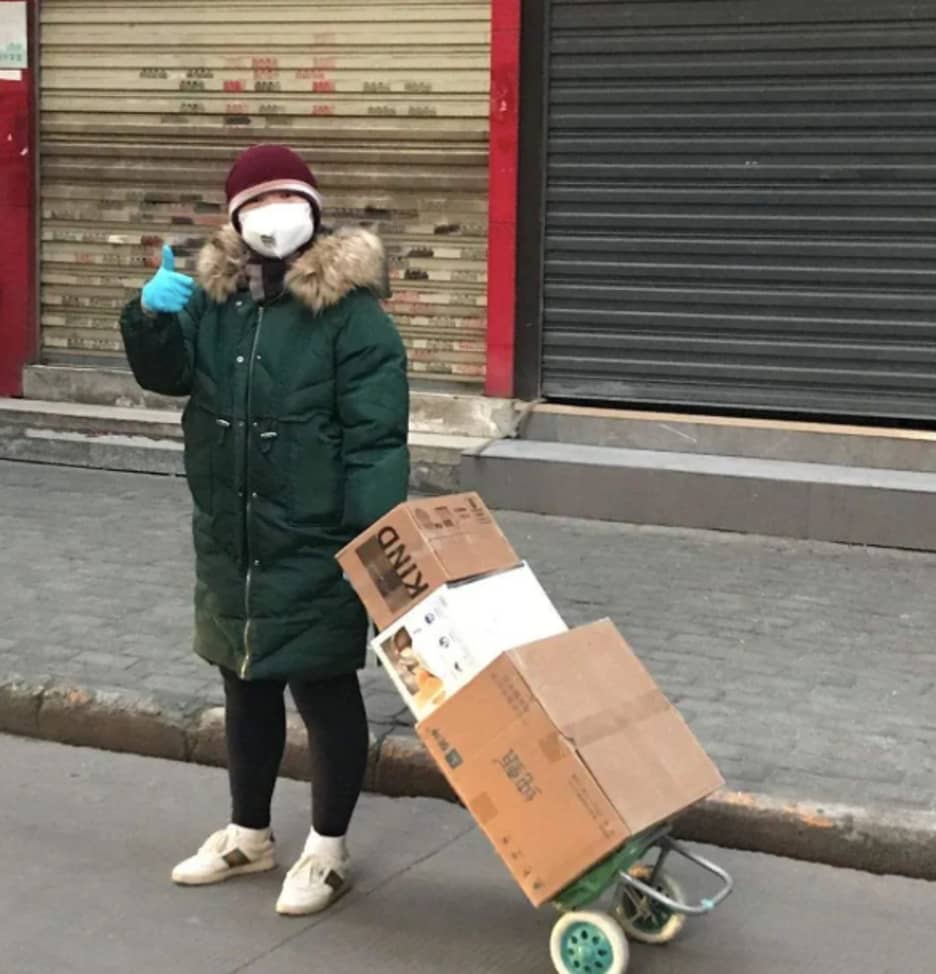by Luanjiao Aggie Hu
Disabled women account for one fifth of global population and over half among all people with disabilities worldwide. Global literature has often documented disabled women’s multiple disadvantages based on gender, disability, and oftentimes poverty status. Disabled women are considered a multiply marginalized population, in that their marginalization occurs based on gender, disability, and the specific experiences of women with disabilities. They often have less educational attainments, lower employment rates, less access to healthcare services, etc. Limited research on Chinese disabled women has further revealed the multitude of challenges they face.
In China, Covid-19 surfaced in media in January, peaked in February, and seemingly came to an end in March. For months, Chinese people were under strict lock-down policies. News reported the surge of domestic violence against women during this time. How did Chinese disabled women fare in the pandemic? A Beijing-based organization – Beijing Enabled Sister Center realized the urgency and coordinated the distribution of sanitary pads and diapers for women with disabilities in need among other assistances. The organization also encouraged disabled women to share their experiences and stories during lockdown. As a Chinese disabled woman studying abroad, I contributed a piece detailing my own experience and perspective during Covid-19. As a researcher with disability, I took interest in the stories and studied the narratives from around 30 disabled women who were of diverse geographic locations, socioeconomic statuses and disability categories. In addition, I examined news on gender and disability in Covid-19 and talked to disabled women leaders to learn about the changes in their lives. Summarizing different ways in which disabled women were impacted, I realized that the women’s voices revealed more than what the literature documented.
To start, the narratives showed difficulties disabled women experienced in the crisis. At the threat of the pandemic, disabled women expressed their higher risk of infection and mortality. While navigating in a quarantined version of daily environments, vision or mobility impaired women found themselves at higher risk of getting infected due to assistive devices touching contaminated surfaces or use-of-touch in daily lives. Concerned about their underlying conditions and immunocompromised physiological statuses, disabled women voiced that they would not survive if infected. Some women had to cancel or delay their doctor’s appointments and/or personal assistant’s home visits in fear of increased exposure and possible infection.
Second, disabled women faced challenges accessing information, supplies, food, transportation, and healthcare services during quarantine. When the pandemic hit, rarely any news channels in China provided sign language interpretation or closed captioning. In Hubei Province, the epicenter of the outbreak, the deaf and hard-of-hearing community lagged behind in obtaining COVID-related information; therefore, they experienced the lag in the purchase of necessary supplies to prepare for the quarantine.

Due to lockdown policies and shortages of goods, some disabled women mentioned about running low on diapers and feminine hygienic items and feared for bedsores and other complications. Women with mobility impairments who lived alone found themselves in a dilemma when they tried to shop online in bulk. The items they purchased online could not be delivered to their homes due to strict quarantine measures: gatekeepers of apartment complexes and neighborhoods prohibited any entry of external visitors including delivery personnel. In one narrative by a disabled woman who resided in a rural village, she expressed worry about food shortages.

Women also shared their negative experiences with accessing healthcare services during Covid-19. A woman in Taiwan found herself in an inaccessible hospital when she needed testing. She ended up staying in her wheelchair for the night with no accessible restroom to use.

Another major impact disabled women mentioned was economic, with income and job losses. Women experienced financial pressure as neither they nor their families could work for months. Some women in personnel roles were faced with either salary cuts or threats of losing their jobs. There were also women who were fired without any compensatory packages during Covid-19. Faced with cancellation of programs and funding, some disabled women organizational leaders had to reduce their own salaries to sustain their organizations.
Despite the difficulties, I have especially observed great agencies and multiple roles disabled women exhibited in their natural settings (see images). In the narratives, women were caretakers, business owners, frontline essential workers, community organizers, volunteers, among many other roles. Disabled women took care of their elderly family members and young children during the quarantine. Many women stayed home and continued to work remotely. For example, disabled women customer service workers volunteered to support the huge demand at the surge of online shopping during Covid-19. Many disabled women joined a volunteer-based disability support network to assist with individual case support, creation of accessible information, and coordination of donations for local communities. Some disabled women shared how they had been ‘stay-at-home experts’ prior to Covid-19 due to inaccessible work environments, and they were able to provide counseling support to other people who were now forced to shelter at home and struggle with mental health during quarantine.

In my contact with disability activists and advocates in China, I realized that many of them were so swamped with working in the local communities that they often lacked the time, energy, or sometimes the tools to engage in documentation and research. In addition, with increasing visibility on gender and disability respectively, there has not been much research shared on the intersection of gender and disability. It is with this understanding that I took interest in conducting the research on Chinese disabled women throughout this pandemic.
It is my hope that we see and acknowledge the personal agency disabled women have exerted, and the crucial roles they played in their homes and communities during Covid-19. The pandemic highlighted and exacerbated many existing challenges disabled women face in their lives. It is crucial that we work to remove the systemic barriers that multiply across intersections of marginalization, putting women with disabilities in doubly or triply disadvantaged situations. Additionally, it is imperative that disability-inclusive responses be put in place at times of emergencies and crises. Only through commitments and actions of inclusion and equity, can we ensure dignity and prosperity for all.
Links to articles and images mentioned, in order of appearance:
Le Yirong-Disabled Sisters Story Group. “Women with Disabilities in the Epidemic: Epidemic Calendar of Overseas Education Doctors”, by Hu Luanjiao. May 13, 2020.
Le Yirong-Disabled Sisters Story Group.“Disabled women under the epidemic: I am from Wuhan, I am a deaf woman”, by Doudou Jun. February 25, 2020.
Le Yirong-Disabled Sisters Story Group. “Disabled women under the epidemic: Sign language broadcasts epidemic prevention news is so hard-core”, by DUDU. March 22, 2020.
Central News Agency. “The handicapped will be tested and isolated and sleep in a wheelchair, forced to dig in a hospital bed and become a nightmare”, by Chen Weiting. May 17, 2020.
Le Yirong-Disabled Sisters Story Group. “Disabled women under the epidemic: a different winter vacation”, by Shi Xuejiao. May 16, 2020.
About the author

LuanJiao Aggie Hu is a doctoral candidate at the University of Maryland, with a focus on disability studies, gender studies, and education for people with disabilities. She identifies as a person with disability, a feminist, and an activist scholar.
Would you like to write a blog post about your COVID-19 experiences as a person with a disability or a disability-led organization? Submit a blog pitch via this form.
If you are having technical issues or accessibility issues on this site, email wid@wid.org.
Main content end

0 comments on “COVID Blog: Chinese Women with Disabilities in COVID-19”